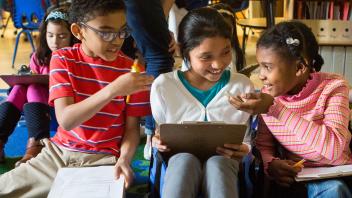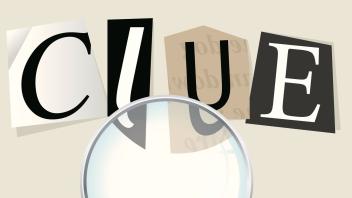Reading comprehension is essential for success in school and in life. It’s the foundation for learning in all other subjects.”
The National Reading Panel
Strong readers think actively as they read. They use their experiences and knowledge of the world, morphology, vocabulary, language structure, and reading strategies to make sense of the text and know how to get the most out of it. They think about the text structure as they read. They know when they have problems with understanding and what thinking strategies to use to resolve these problems when they pop up. These elements enable a skilled reader to create a mental model of the text as they read.
Teachers can play a critical role in helping students develop their comprehension skills. Reading research has shown that comprehension instruction can help students do a better job of understanding and remembering what they read. Good instruction can also help students communicate with others, verbally and in writing, about what they’ve read.
What good readers do
Draw on prior knowledge
Good readers draw on prior knowledge and experience to help them understand what they are reading.
Draw inferences
In addition to understanding the literal points that the author is making, good readers are able to “read between the lines” and draw inferences about a wide range of hidden meanings, such as why events are unfolding as they do, why characters behave in a certain way, what the characters are thinking, and what might happen next.
Pay attention to sentences and text cohesion
Skilled readers notice every word in a sentence and are aware of how a single word can subtly shift the meaning of a sentence or even a passage. Paying attention to the meaning of pronouns and other connecting words/phrases within a complex sentence can make a difference in their understanding of the text.
Some texts are more cohesive, meaning the author’s message is easily understood since the reader can move quickly from one sentence to the next. Interestingly, skilled readers tend to learn more from texts that are less cohesive, probably because they have to pay closer attention to the meaning. Texts that are less cohesive have more complex sentences and thereore, tend to be more difficult for poor comprehenders. Teachers have to pay attention to the challenges and supports in the sentences of texts that we choose for our readers.
Self-monitor
During reading, good readers learn to monitor their understanding, adjust their reading speed to fit the difficulty of the text, and address any comprehension problems they have. After reading, they check their understanding of what they have read. Students who are good at monitoring their comprehension know when they understand what they’re reading and when they don’t.
Form mental images
Good readers often form mental pictures, or images, as they read. Readers (especially younger readers) who picture the story during reading understand and remember what they read better than readers who do not create a picture in their mind.
Summarize and retell
Summarizing requires students to determine what is important in the text and then put it into their own words by retelling, verbally or in writing. Instruction in summarizing can help students become more purposeful as they read and more skillful in comprehending. Summarizing can help students to:
- Identify main ideas orally or in writing
- Connect the main or central ideas orally or in writing
- Learn to weed out unnecessary information
- Remember what they have read
Think about text structure
Good readers notice how a text is organized or structured. Understanding the difference between a narrative structure (story) versus expository structures can help a reader anticipate and fully grasp an author’s message.
More on comprehension
Launching Young Readers
Reading for Meaning
Reading 101 Learning Modules
Comprehension: Introduction
Reading 101: A Guide for Parents
Reading 101 for Parents: Comprehension
Reading and Writing SOS
Reading and Writing SOS: Vocabulary and Comprehension
Why Some Kids Struggle
Target the Problem: Comprehension
Featured video
Browse our comprehension resource library
Learn more about helping children strengthen their reading comprehension and critical thinking skills through our articles, tips for parents, video, FAQs, and research briefs. Visit our Comprehension section










